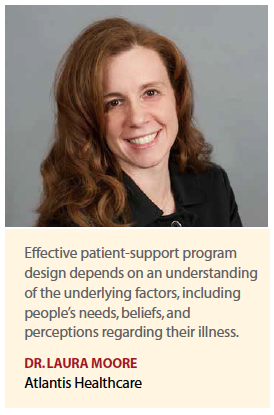 We’ve all seen them: the patient-centric diagrams that represent as many as seven or even up to 20 stakeholders per patient, all of whom are somehow involved in that patient’s care. From drug and device manufacturers, to healthcare providers, to social media sites and even fitness centers, there are so many points of care that need to coordinate around one patient, and getting them all on the same page seems impossible. Our experts agree that true patient-centricity is a huge challenge, but as one of those stakeholders, the pharma industry should play a central role.
We’ve all seen them: the patient-centric diagrams that represent as many as seven or even up to 20 stakeholders per patient, all of whom are somehow involved in that patient’s care. From drug and device manufacturers, to healthcare providers, to social media sites and even fitness centers, there are so many points of care that need to coordinate around one patient, and getting them all on the same page seems impossible. Our experts agree that true patient-centricity is a huge challenge, but as one of those stakeholders, the pharma industry should play a central role.
Keith Riddiford, head, customer strategy and operations, Novartis Pharmaceuticals, says social media channels are mobilizing patients to share information and support with others. As a result, patients expect more from the healthcare industry and want to have the ability to choose what type of treatments they receive and how.
“In theory, patient-centricity makes sense as a core focus for pharma," says Jessica Brueggeman, senior VP, health behavior group, MicroMass. “The challenge is that there is no single definition for patient-centricity, making alignment with key stakeholders difficult. And stakeholders, including pharma companies, deliver on patient-centricity in diverse ways."
But alignment of stakeholders is not impossible, she says.
“With access to payers, providers, patients, and technology companies, the pharma industry can lead the way and develop patient-engagement solutions that go beyond product and disease information," Ms. Brueggeman says. “Pharma companies should leverage evidence-based techniques — shared decision-making, motivational interviewing, and problem solving — that impact motivation, help build skills, and demonstrate results that optimize patient outcomes."
The only constants in this paradigm are the patients, and they also play a role in aligning the stakeholders in their own care. Therefore, the pharma industry should rely heavily on their input to determine how best to contribute to the patients’ needs.
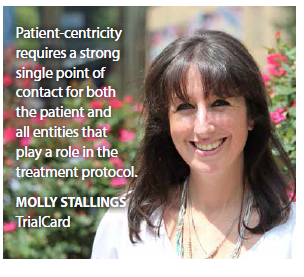 “Pharma needs to work with other stakeholders to provide a platform that facilitates cooperation and interaction to motivate patients to engage with their services," says Tim Davis, CEO and founder, Exco InTouch. “A truly patient-centric model should work from the center — where the patient is — outwards, not from the outside in."
“Pharma needs to work with other stakeholders to provide a platform that facilitates cooperation and interaction to motivate patients to engage with their services," says Tim Davis, CEO and founder, Exco InTouch. “A truly patient-centric model should work from the center — where the patient is — outwards, not from the outside in."
Achieving patient-centricity in today’s healthcare landscape, where stakeholders are undoubtedly greater in not only number but also diversity of function, requires a strong single point of contact for both the patient and all entities that play a role in the treatment plan.
“This group must have both an understanding of patient needs, goals, desired outcomes, and effective communication strategies as well as the subject-matter expertise to be the behind-the-scenes facilitators of an efficient process that ensures rapid starts and continued adherence to therapy," says Molly Stallings, patient access services, TrialCard. “A truly effective hub must strike a balance between being able to work both on the patient’s behalf in terms of administrative matters such as benefits investigation and verification, prior authorization and appeals management, specialty pharmacy triage, and HCP staff assistance and directly with the patient through engaging, individualized interventions that educate and support the individual on his or her journey."
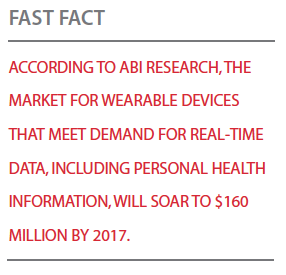 By hub, Ms. Stallings is referring to positioning the right talent in critical areas. Nursing staff, reimbursement specialists, and case managers are just a few of the roles that factor prominently into an organization’s ability to provide this level of support and drive true patient-centricity that can produce demonstrated positive outcomes, she says.
By hub, Ms. Stallings is referring to positioning the right talent in critical areas. Nursing staff, reimbursement specialists, and case managers are just a few of the roles that factor prominently into an organization’s ability to provide this level of support and drive true patient-centricity that can produce demonstrated positive outcomes, she says.
“Without all of these functions under one umbrella there will be a gap in any hub provider’s capacity to fully serve as this single point of contact," Ms. Stallings continues.
“The most dangerous thing the industry can do is to maintain the status quo, and many senior leaders have already acknowledged the need to move toward more patient centricity," says David Zaritsky, president, PulseCX. “Once everybody embraces the idea that all roads lead to the patient we will see marketing improve."
Reports say this shift has begun, with 85% of pharmaceutical executives having piloted patient-centric models and 51% having widely adopted this approach. A Strategy& report in April of this year says that 83% of executives expect to further restructure their commercial model in the next two to three years.
At Novartis, leaders have found that gathering diverse perspectives from varying stakeholders is critical to obtaining a deep understanding of the needs of patients and developing innovative solutions to help people live longer, healthier lives. As a leader in the industry, the company feels a responsibility to help foster dialogue and collaboration among stakeholders around critical needs facing patients today.
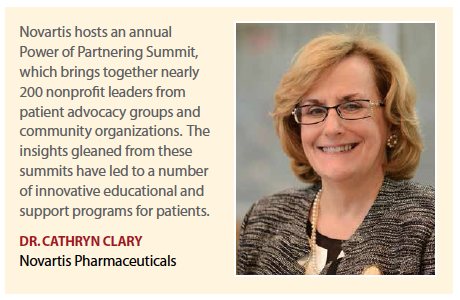 “For example, we convened a multidisciplinary panel of thought leaders at the 2015 BIO International Conference where we led a conversation about enhancing greater patient access to innovative medicines," says Cathryn Clary, M.D., head of U.S. clinical development and medical affairs, Novartis Pharmaceuticals.
“For example, we convened a multidisciplinary panel of thought leaders at the 2015 BIO International Conference where we led a conversation about enhancing greater patient access to innovative medicines," says Cathryn Clary, M.D., head of U.S. clinical development and medical affairs, Novartis Pharmaceuticals.
“As a group, we discussed the greatest challenges standing in the way of ensuring patients get the full benefit of innovative therapies entering the market, and talked about ways we all could better collaborate to create solutions for patients."
The company also hosts the annual Power of Partnering Summit, which brings together about 200 nonprofit leaders from patient advocacy groups and community organizations. As a result of the workshops led by academia, robust discussion, and networking, the insights gleaned from these summits have led to a number of innovative educational and support programs for patients, as well as collaborations benefiting the patient and caregiver communities, Dr. Clary says.
Mr. Zaritsky says Mead Johnson is another company whose senior leaders are coming together across franchises to move the organization toward costumer-centric experiences.
“Mead Johnson leaders spend a lot of time working with marketing, supply chain, sales managers, and other leaders to understand what an excellent patient experience would look like," he says. “They are creating experiential programs that sales people are delivering to physicians, and physicians are delivering to the patient. This work has earned Mead Johnson the reputation of being very patient-centric."
What Patients Want
A company that doesn’t correctly know or understand the patients it serves will have a difficult time becoming successfully patient-centric. All the collaboration across stakeholders will not do any good unless the services and programs being offered actually resonate with patients.
“Patient-centricity is best approached by considering patients’ different experiences at different points along the healthcare continuum," says David Davenport-Firth, executive VP of health behavior strategy and intervention, Ogilvy CommonHealth Worldwide.
One of the mistakes the industry makes is to assume it knows what patients want and need.
“It’s not complicated," Mr. Zaritsky says. “The first step starts with listening to patients."
Even when building a program designed for the physician, pharma companies must include patient needs in the equation, he says.
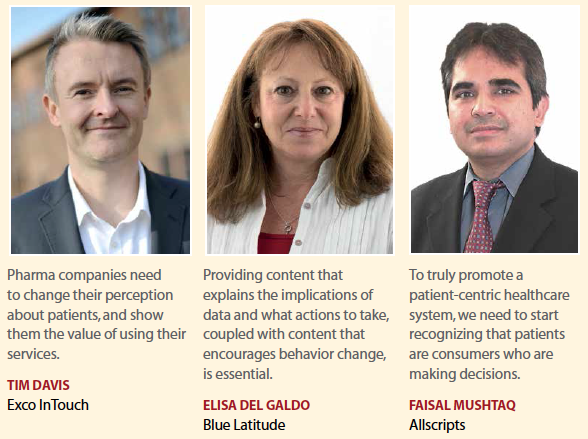 “The industry is still in the early stages of engaging patients in their care," says Faisal Mushtaq, president of payer/life sciences business, Allscripts. “To truly promote a patient-centric healthcare system, we need to start recognizing that patients are consumers who are making decisions — even when they’re not directly interacting with providers. The healthcare community needs to empower them to make informed decisions, and help them understand the effects of those decisions over time."
“The industry is still in the early stages of engaging patients in their care," says Faisal Mushtaq, president of payer/life sciences business, Allscripts. “To truly promote a patient-centric healthcare system, we need to start recognizing that patients are consumers who are making decisions — even when they’re not directly interacting with providers. The healthcare community needs to empower them to make informed decisions, and help them understand the effects of those decisions over time."
Mr. Mushtaq believes that the pharmaceutical industry knows its patients as consumers better than any other segment of healthcare.
“Pharma companies understand what makes the consumer tick and how to impact behavior, which is why they are successful at attracting consumers," he says. “Leveraging this knowledge on engaging consumers in driving adherence to health and life-style choices would have quite an impact across patient populations, especially those patients with chronic diseases."
The challenge remains however, that even with all of this expertise, pharmaceutical companies haven’t taken a seat at the value-based-care table today and the industry is also limited because of so many of the regulatory issues, Mr. Mushtaq adds.
 Mr. Zaritsky applauds several progressive companies in the industry that have started to focus on experiential marketing and are moving away from brand-focused campaigns. But some companies have misinterpreted what being patient-centric means to patients.
Mr. Zaritsky applauds several progressive companies in the industry that have started to focus on experiential marketing and are moving away from brand-focused campaigns. But some companies have misinterpreted what being patient-centric means to patients.
“Many companies have interpreted patient-centric as creating more material and more information that they throw at patients, such as brochures, educational material, and such, without once considering what gaps they need to fill for the patient," Mr. Zaritsky says. “Patients don’t necessarily want nor need more information; what they want is an experience with the product similar to what other brands outside the industry are offering."
Patient-centricity is critical to successful medication adherence, but, for patient-centricity to be truly meaningful, healthcare stakeholders — especially pharma companies — need to really understand each patient beyond the generic categorizations of gender, socio-economics, age, and disease state, says Laura Moore, Ed.D., lead health psychology specialist at Atlantis Healthcare.
“Effective patient-support program design, for example, depends more on an understanding of underlying factors, including a person’s needs, beliefs, and perceptions regarding their illness," she says. “Health psychology frameworks reveal that treatment nonadherence is multi-factorial and complex, influenced by factors such as beliefs about illness and treatment coherence, social support, HCP communication, and medical access."
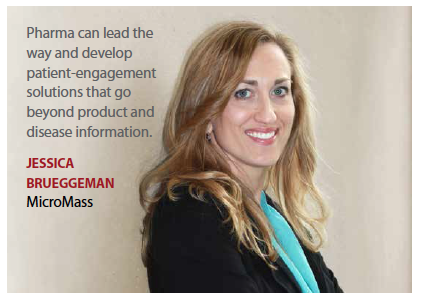 Without understanding why people are nonadherent, segmenting them just by other demographics is unlikely to be helpful. However, by focusing on the belief-based nature of nonadherence, pharma can help lead the way to establish more effective, relevant, personalized approaches to empowering people to better self-manage their condition for the long-term, Dr. Moore says.
Without understanding why people are nonadherent, segmenting them just by other demographics is unlikely to be helpful. However, by focusing on the belief-based nature of nonadherence, pharma can help lead the way to establish more effective, relevant, personalized approaches to empowering people to better self-manage their condition for the long-term, Dr. Moore says.
According to Elisa del Galdo, head of customer experience, Blue Latitude, her company’s research with patients shows that they want to be partners in the decisions that are made concerning their care.
“To facilitate patient-centricity, where patients actually have a role in the decisions that affect their treatment, the system must address the needs of the patient, support health literacy and decision making, and make the system easy to navigate," Ms. del Galdo says. (PV)

















